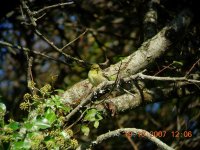frank.e.oy
Member
There´s a new scope from Zeiss to be presented at the Photokina on monday. It´s a device with an integrated 7MP digicam. The magnification is 15-45x, the focal length of the camera is from 600 up to 1800 mm.
The FOV is 68 degrees. Like in the DC4 there is no flip mirror, it uses a beam splitter instead (so there is no shaking when taking a picture).
The only informations in the web so far are in german language, see:
http://www.orniwelt.de/products/Spektive/Zeiss/Spektive-und-Okulare/Zeiss-PhotoScope-85-T-FL.html
Sounds very interesting!
Frank
The FOV is 68 degrees. Like in the DC4 there is no flip mirror, it uses a beam splitter instead (so there is no shaking when taking a picture).
The only informations in the web so far are in german language, see:
http://www.orniwelt.de/products/Spektive/Zeiss/Spektive-und-Okulare/Zeiss-PhotoScope-85-T-FL.html
Sounds very interesting!
Frank







